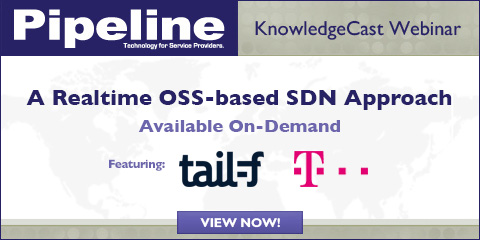NFV Evolution: Defining the Missing Link
Deutsche Telekom, an NFV pioneer, has successfully implemented NCS in its TeraStream project. “We believe carriers can no longer afford to hard-code services into the OSS if they want to get to market quickly with new services,” said Axel Clauberg, Vice President, Aggregation, Transport, IP and Fixed Access, Deutsche Telekom AG. “The Tail-f NCS solution, with both services and the network modeled in a standardized high-level language, shortens time to market, increases vendor independence and dramatically improves the cost structure. This SDN solution is a key component in TeraStream’s real-time OSS,” he adds.
(Pipeline hosted a webinar with Deutsche Telekom and Tail-f in 2013. which is available on demand.)
Hakan Millroth, CTO of Tail-f Systems, sees the TeraStream use case as fundamental to the adoption of NFV. “Tail-f has been driving standardization of network service programmability for a long time to reduce key pain points such as vendor dependence, lack of service innovation and high operating costs. The adoption of these standards by TeraStream and its network equipment providers will fundamentally change the networking industry.”Delivering on the promise of NFV
ETSI specifications do not outline the need for a single orchestration layer. In order to rapidly deliver new services in a virtual network environment and deliver on the promises of NFV, a network service orchestration layer is needed that enables services to be programmed and automatically translated into configuration changes on network devices in a way that supports the rapidly emerging, software-centric processes. This layer must accommodate multiple vendors as well as legacy hardware, while providing a migration path to total SDN/NFV deployment. One of the solutions available to CSPs, Tail-f’s NCS, solves both the technical and business challenges service providers face as they seek to swiftly launch new services in their constantly evolving, multi-vendor network environments.




















